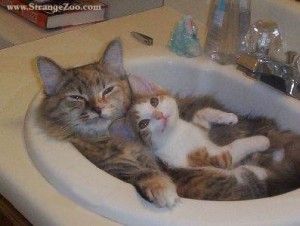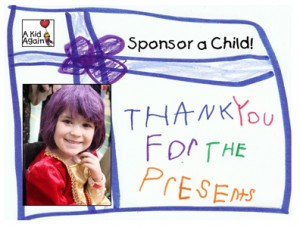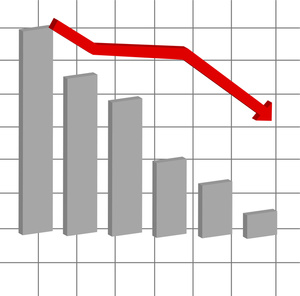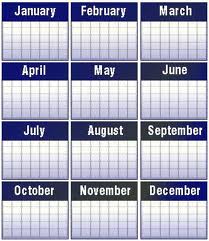How A Donor Communications Program Keeps Donors Giving and Giving
Are you over-soliciting and under-communicating?
The problem is – we solicit our donors often, probably way too often.
But what happens with our donors in between solicitations?
It’s called “communications,” says my friend Kivi Leroux Miller, the nonprofitmarketingguide.com guru.
And there’s the rub.
We study, study, study how to ask.
But do we study as hard how to communicate warmly and personally?
Are we studying how to make our donors feel loved and so very appreciated?
(Does your thank you letter make your donor feel loved? Just asking!)
Why aren’t we studying “warm and fuzzy” communications to donors?
(I’d sure rather go to a Warm and Fuzzy workshop than The Art of the Ask workshop!)
Now, don’t get me wrong here.
You GOTTA be able to ask and ask well.
‘Love on” your donors
BUT you also GOTTA “love on” your donors (as we say in the south) a whole lot.
And I’m taking a stand right now that we over emphasize the Asking, and we neglect the Donor Communication, aka, “Donor Love.”
I think it’s time fundraisers and board members tackled this issue head-on.
Why You Need a Donor Communications Program RIGHT NOW
How we communicate with our donors has everything do to with whether they give again, and whether they keep giving.
Great donor communications can reverse our terrible decline in overall donor numbers.
Remember that the overall number of donors has decreased by 20% over the past 5 years. (Blackbaud)
Donor Love can boost up our abysmal donor renewal rates.
(Did you know that overall donor retention averaged 41% and new donor retention averaged 27% in 2010? Gasp!) (AFP Fundraising Effectiveness Survey)
Just think how much money you could raise if you get more donors to renew???
Donor Love can make or break your fundraising program – hands down.
If your donors don’t feel appreciated, involved, supported, responded to, connected, and informed – then they probably will not make another gift to your wonderful cause.
So, what’s your communications strategy to keep your donors in the loop?
You need a plan to keep them close, warmed up – so they’ll be friendly when it comes time to ask again.
You need a plan to connect with them.
In between your solicitations, what will you send them? What will you say to them?
A Donor Communications Program Can Create Amazing Results
Remember the old fundraising adage: “Find 7 ways to thank your donor and she’ll give again.”
That’s what Donor Love is all about.
Here’s a checklist of ideas you can use to craft your very own Donor Love program – things to help you create compelling, happy, friendly, warm and fuzzy messages to your donors.
Be systematic.
Set up a calendar of what type of communication you are sending out and when it goes out.
Plan ahead and put somebody in charge.
Create themes and message ideas and get everybody to agree on them ahead of time.
That’ll save you lots of time and discussions later on!
Get Help.
If you are really smart, engage a terrific communications firm like Big Duck, or Agents for Good.
Ask them to help design a Donor Communications program for the year.
A great communications consultant can come up with ideas that will charm the socks right off your donors.
Ideas you’d never think of.
Be creative.
Come up with different ways to say thank you to your donors. Can you send a singing thank you telegram for example?
Can you change your Annual Report into an “Accomplishments Report?”
Can you change your Annual Meeting into an Annual Celebration?
Can you change your Donor Appreciation Event into a cookout or a porch party?
How can you involve your donors in the life and mission of your cause?
Use lots of channels.
You have all sorts of communications channels at your disposal: in person visits, phone, mail, all types of events, newsletters, acknowledgements, social media.
Use them all. Systematically.
Especially face-to-face visits.
Let your donors know how you spent their money.
Donor are having a lot of trust issues these days. They don’t trust the government, big institutions, politicians, nonprofits and probably not your organization either.
You have to earn their trust.
How?
By letting them know how you spent their money – as accurately and as transparently as possible.
Let your donors know what you achieved with their money.
(Note: this is different from “how you spent their money.”)

Can you be this warm and fuzzy with your donors? : )
This is about outcomes and your results.
How many people did you help? Or cure? Or feed? Or care for?
How many kids, or adults or elders? How many performances did you present? How many educational sessions with how many kids?
Get your tone right.
Lofty and formal is different from warm and fuzzy.
Yes, it’s ok to deviate from the formal, jargon-rich, lofty “nonprofit-speak” that you so often use to the rest of the world.
What’s the tone of your communications to them?
How personalized?
Yes, it’s ok to use contractions like I’m using in this sentence.
Yes, it’s ok to tell stories and to be casual.
By all means, be friendly!
Bottom Line:
It’s past time to add Donor Communications as a new formal element to your fundraising program.
You’ve GOT to stay in front of your donors – cheerfully – in between solicitations if you want them to keep giving!
What do you think? Let me know with a comment!





